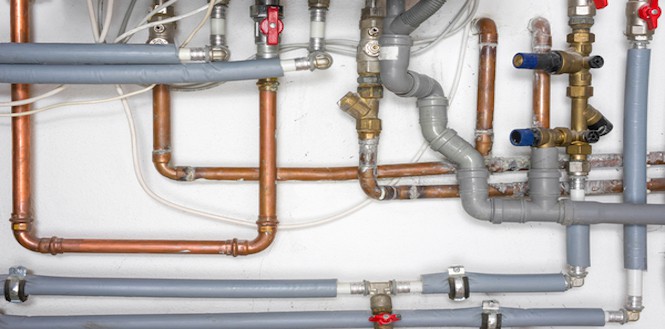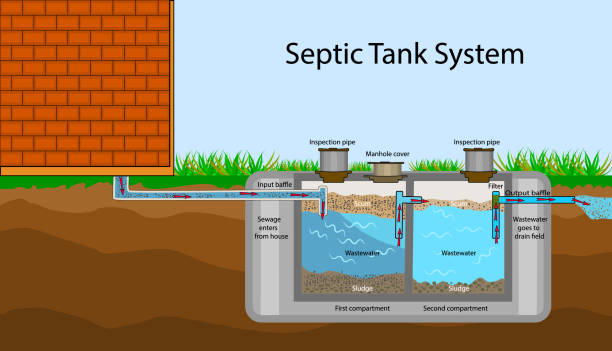What're your concepts on Plumbing Installation 101: All You Need to Know?

Understanding how your home's plumbing system functions is important for each house owner. From supplying clean water for alcohol consumption, cooking, and showering to safely removing wastewater, a well-kept pipes system is essential for your household's health and wellness and convenience. In this comprehensive overview, we'll explore the complex network that composes your home's pipes and offer pointers on maintenance, upgrades, and dealing with usual concerns.
Introduction
Your home's plumbing system is more than simply a network of pipelines; it's an intricate system that ensures you have access to clean water and effective wastewater elimination. Recognizing its parts and exactly how they interact can aid you prevent pricey repairs and make certain every little thing runs efficiently.
Standard Components of a Plumbing System
Pipes and Tubing
At the heart of your plumbing system are the pipes and tubes that bring water throughout your home. These can be made from numerous products such as copper, PVC, or PEX, each with its advantages in regards to resilience and cost-effectiveness.
Fixtures: Sinks, Toilets, Showers, etc.
Fixtures like sinks, bathrooms, showers, and tubs are where water is utilized in your house. Comprehending exactly how these components link to the pipes system assists in identifying issues and preparing upgrades.
Shutoffs and Shut-off Points
Valves manage the flow of water in your plumbing system. Shut-off valves are essential throughout emergency situations or when you require to make repair services, enabling you to separate parts of the system without disrupting water flow to the entire home.
Water System System
Main Water Line
The primary water line links your home to the metropolitan water system or a private well. It's where water enters your home and is dispersed to numerous fixtures.
Water Meter and Stress Regulatory Authority
The water meter actions your water use, while a stress regulatory authority makes certain that water moves at a secure stress throughout your home's pipes system, preventing damages to pipelines and components.
Cold Water vs. Warm water Lines
Understanding the difference in between cold water lines, which provide water straight from the primary, and hot water lines, which bring heated water from the hot water heater, assists in fixing and planning for upgrades.
Water drainage System
Drain Pipes Pipeline and Traps
Drain pipelines bring wastewater away from sinks, showers, and commodes to the drain or sewage-disposal tank. Traps protect against drain gases from entering your home and also catch particles that could create blockages.
Ventilation Pipelines
Air flow pipelines permit air into the drainage system, protecting against suction that might slow water drainage and trigger traps to vacant. Proper air flow is vital for maintaining the honesty of your plumbing system.
Relevance of Appropriate Drainage
Making certain appropriate drainage stops back-ups and water damage. Regularly cleansing drains and keeping traps can protect against costly fixings and prolong the life of your pipes system.
Water Heating Unit
Kinds Of Water Heaters
Hot water heater can be tankless or traditional tank-style. Tankless heating systems warm water on demand, while storage tanks save warmed water for immediate usage.
Exactly How Water Heaters Connect to the Plumbing System
Recognizing how hot water heater connect to both the cold water supply and warm water distribution lines aids in diagnosing problems like not enough warm water or leaks.
Maintenance Tips for Water Heaters
Regularly flushing your water heater to get rid of sediment, inspecting the temperature level settings, and examining for leakages can extend its life expectancy and boost energy performance.
Typical Pipes Problems
Leakages and Their Causes
Leakages can happen as a result of aging pipelines, loose installations, or high water pressure. Resolving leaks quickly protects against water damage and mold development.
Clogs and Clogs
Clogs in drains pipes and commodes are typically brought on by flushing non-flushable things or a buildup of oil and hair. Making use of drain displays and being mindful of what decreases your drains pipes can prevent clogs.
Indications of Pipes Troubles to Expect
Low water pressure, slow drains, foul odors, or uncommonly high water expenses are indicators of possible pipes problems that should be dealt with quickly.
Pipes Upkeep Tips
Normal Examinations and Checks
Arrange yearly pipes evaluations to catch issues early. Seek indicators of leakages, deterioration, or mineral build-up in taps and showerheads.
Do It Yourself Upkeep Tasks
Simple tasks like cleaning faucet aerators, looking for commode leakages using dye tablet computers, or insulating subjected pipes in cool environments can protect against significant plumbing concerns.
When to Call a Professional Plumbing Technician
Know when a pipes problem requires expert expertise. Attempting complex repairs without correct knowledge can bring about even more damages and greater fixing expenses.
Upgrading Your Pipes System
Reasons for Updating
Updating to water-efficient fixtures or changing old pipes can improve water high quality, reduce water bills, and boost the worth of your home.
Modern Pipes Technologies and Their Advantages
Check out modern technologies like wise leakage detectors, water-saving bathrooms, and energy-efficient hot water heater that can conserve cash and lower environmental influence.
Price Factors To Consider and ROI
Determine the in advance costs versus lasting financial savings when thinking about pipes upgrades. Many upgrades spend for themselves through reduced energy expenses and fewer fixings.
Environmental Effect and Conservation
Water-Saving Fixtures and Devices
Setting up low-flow taps, showerheads, and toilets can dramatically minimize water usage without giving up performance.
Tips for Reducing Water Usage
Simple habits like fixing leaks quickly, taking much shorter showers, and running full tons of laundry and meals can save water and reduced your utility costs.
Eco-Friendly Pipes Options
Think about sustainable plumbing products like bamboo for floor covering, which is durable and environmentally friendly, or recycled glass for kitchen counters.
Emergency Readiness
Steps to Take Throughout a Pipes Emergency
Know where your shut-off shutoffs are located and how to turn off the water in case of a ruptured pipe or significant leak.
Importance of Having Emergency Situation Get In Touches With Convenient
Keep get in touch with details for regional plumbers or emergency services easily offered for fast action during a pipes situation.
Do It Yourself Emergency Situation Fixes (When Applicable).
Temporary solutions like using duct tape to patch a dripping pipeline or putting a pail under a trickling faucet can decrease damage till an expert plumbing professional shows up.
Verdict.
Comprehending the makeup of your home's plumbing system encourages you to preserve it properly, saving money and time on repair work. By adhering to regular maintenance regimens and staying notified concerning modern pipes technologies, you can ensure your pipes system operates successfully for years to find.
HOW YOUR PLUMBING SYSTEM WORKS
Which Pipes Do What?
Blue lines = fresh water supply entering the building
Red lines = hot water supply entering the building
Grey lines = pipes carrying waste away from the building and venting pipes carrying gases away from the building (through the roof)
YOUR MAIN PLUMBING SYSTEMS
There are two main plumbing systems that support your home s basic plumbing needs one that brings clean water into your home, and one that sends dirty water away from your home. Connected to the toilet, bath, shower, and other faucets in your home, these two systems keep your water flowing in the right directions.
ACCESSING FRESH WATER
Fresh and clean water is brought into your home through the main water supply line . Filtered through one pipe, this water is pressured to flow into the various fixtures in your home at any given time.
This water can be sourced from a well located on your property, a pond or river (mostly cottages), or, as in most cases, from the city s municipal water treatment centre. However, it is important to note that water that is untreated, such as the water siphoned from ponds or rivers, may not be safe to drink. Personal water supplies always need to be treated for hardness and contaminants before consumed.
MUNICIPAL WATER SUPPLIES
Improve taste and odour
Remove sediment
Eliminate hardness
Reduce chlorine
COLD WATER SUPPLY VS. HOT WATER SUPPLY
Cold water flows into your home or building through the service line, which then distributes hot or cold water to your fixtures. This line is most commonly run through a central column that runs floor to floor. Hot water runs in short and straight pipes as the longer the pipeline, the more heat that will be lost in the transfer. Having shorter pipes also allows residents to access hot water more quickly.
WASTE WATER SYSTEM
Your wastewater system is divided into two parts pipes that send wastewater away from your home and venting pipes that send sewer gas away from your home. Sewage water travels through pipes that flush the water and waste towards local sewers that are operated and managed by your city or town. Most sewer systems rely on gravity to move the wastewater to where it needs to go.
The further away from your toilet or sink, the larger wastewater pipes become. This allows for waste to be disposed of from various parts of your home or business at once without pipe blockages. The angle and flow of these pipes are also essential for keeping your waste pipes clear of build up.
https://harrisplumbing.ca/how-your-home-plumbing-system-works/

HOW YOUR PLUMBING SYSTEM WORKS
Which Pipes Do What?
YOUR MAIN PLUMBING SYSTEMS
There are two main plumbing systems that support your home s basic plumbing needs one that brings clean water into your home, and one that sends dirty water away from your home. Connected to the toilet, bath, shower, and other faucets in your home, these two systems keep your water flowing in the right directions.
ACCESSING FRESH WATER
Fresh and clean water is brought into your home through the main water supply line . Filtered through one pipe, this water is pressured to flow into the various fixtures in your home at any given time.
This water can be sourced from a well located on your property, a pond or river (mostly cottages), or, as in most cases, from the city s municipal water treatment centre. However, it is important to note that water that is untreated, such as the water siphoned from ponds or rivers, may not be safe to drink. Personal water supplies always need to be treated for hardness and contaminants before consumed.
MUNICIPAL WATER SUPPLIES
COLD WATER SUPPLY VS. HOT WATER SUPPLY
Cold water flows into your home or building through the service line, which then distributes hot or cold water to your fixtures. This line is most commonly run through a central column that runs floor to floor. Hot water runs in short and straight pipes as the longer the pipeline, the more heat that will be lost in the transfer. Having shorter pipes also allows residents to access hot water more quickly.
WASTE WATER SYSTEM
Your wastewater system is divided into two parts pipes that send wastewater away from your home and venting pipes that send sewer gas away from your home. Sewage water travels through pipes that flush the water and waste towards local sewers that are operated and managed by your city or town. Most sewer systems rely on gravity to move the wastewater to where it needs to go.
The further away from your toilet or sink, the larger wastewater pipes become. This allows for waste to be disposed of from various parts of your home or business at once without pipe blockages. The angle and flow of these pipes are also essential for keeping your waste pipes clear of build up.
https://harrisplumbing.ca/how-your-home-plumbing-system-works/
I'm very eager about Understanding Your Home's Plumbing Anatomy and I hope you appreciated my page. Are you aware of another person who is truly interested in The Inner Workings of Your Home's Plumbing? Be sure promote it. Thanks for your time invested reading it.
Call Today